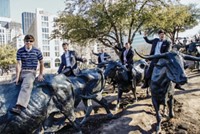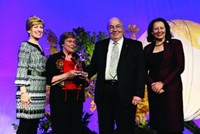Advertisement
Grab your lab coat. Let's get started
Welcome!
Welcome!
Create an account below to get 6 C&EN articles per month, receive newsletters and more - all free.
It seems this is your first time logging in online. Please enter the following information to continue.
As an ACS member you automatically get access to this site. All we need is few more details to create your reading experience.
Not you? Sign in with a different account.
Not you? Sign in with a different account.
ERROR 1
ERROR 1
ERROR 2
ERROR 2
ERROR 2
ERROR 2
ERROR 2
Password and Confirm password must match.
If you have an ACS member number, please enter it here so we can link this account to your membership. (optional)
ERROR 2
ACS values your privacy. By submitting your information, you are gaining access to C&EN and subscribing to our weekly newsletter. We use the information you provide to make your reading experience better, and we will never sell your data to third party members.
Careers
Chemists Convene In New Orleans
ACS Meeting News: ‘Chemistry of Energy & Food’ was national meeting’s theme
by Susan J. Ainsworth
April 11, 2013
| A version of this story appeared in
Volume 91, Issue 15

With its storied culinary scene, New Orleans proved a fitting place for last week’s American Chemical Society national meeting, which spotlighted food and energy chemistry.
Four plenary lectures covered topics from food flavors to microalgal triglyceride oils as a new source of renewable oil for energy and food.
The meeting also featured ACS’s inaugural “Communicating Chemistry” cooking competition for students highlighting New Orleans’ Cajun cuisine. Teams from the College of the Ozarks; California State University, Fresno; and Cornell University gave interactive presentations related to food chemistry in the style of popular food science television shows. The event ended in a three-way tie.
Another highlight was The Kavli Foundation Innovations in Chemistry Lecture presented by Daniel G. Nocera, a professor in Harvard University’s department of chemistry and chemical biology. He described improvements to the world’s first practical artificial leaf—a simple catalyst-coated wafer of silicon—which mimics the ability of real leaves to produce energy from sunlight and water. Christy L. Haynes, a University of Minnesota chemistry professor, delivered the inaugural Kavli Foundation Emerging Leader in Chemistry Lecture, which focused on evaluating nanoparticle toxicity.
Other events included an ACS reception to honor donors of the ACS Scholars program, including BASF, which the society named a national partner following the company’s recent pledge of $112,000 over three years.
ACS President Marinda Li Wu and Xi Zhang, vice president of the Chinese Chemical Society, signed a three-year extension of the memorandum of understanding (MOU) between the two societies. Wu and James Darkwa, president of the South African Chemical Institute (SACI), signed a three-year MOU establishing a collaboration between ACS and SACI. And the ACS Board of Directors approved an alliance with the Latin American Federation of Chemical Associations.

The board’s open meeting featured a discussion centered around two questions for ACS members: “What one thing would you like from ACS that you don’t get now?” and “What one thing do you get from another organization that you wish you got from ACS?” Numerous ACS members provided varied answers, many of which involved ways to better attract and engage student and industrial members.
During the ACS Council meeting, candidates were chosen for major society offices. Councilors selected two candidates for 2014 ACS president-elect: G. Bryan Balazs, associate program leader at Lawrence Livermore National Laboratory, and Charles E. Kolb Jr., president and chief executive officer of Aerodyne Research in Billerica, Mass.
After a vote, the council rejected a “Petition to Amend National Election Procedures,” which would have changed the society’s election process for ACS president-elect. However, it approved ACS dues of $154 for 2014, as well as a minor revision of the “Academic Professional Guidelines” and a change in the way that ACS distributes funds to local sections, beginning in 2014.
Council also approved establishment of an ACS International Chemical Sciences Chapter in Romania and changes to the charter bylaws for new international chemical sciences chapters.
The Committee on Budget & Finance reported on the society’s 2012 financial performance at the council meeting. Revenues totaled $490.7 million, while net contribution from operations reached $20.2 million, $4.3 million more than had been budgeted. The strong showing resulted largely from better-than-expected performances by the Publications Division and Chemical Abstracts Service.
In all, more than 15,500 chemists and other visitors attended the meeting in New Orleans, including almost 5,800 students and 960 exposition exhibitors. The on-site ACS Career Fair hosted almost 40 employers and more than 860 job seekers, who had access to more than 130 available positions. The Virtual Career Fair attracted almost a dozen employers and roughly 550 job seekers.
Those who made it to the Crescent City had plenty of company—they rubbed shoulders with fans cheering on the teams in the NCAA Final Four women’s basketball tournament.




Join the conversation
Contact the reporter
Submit a Letter to the Editor for publication
Engage with us on Twitter